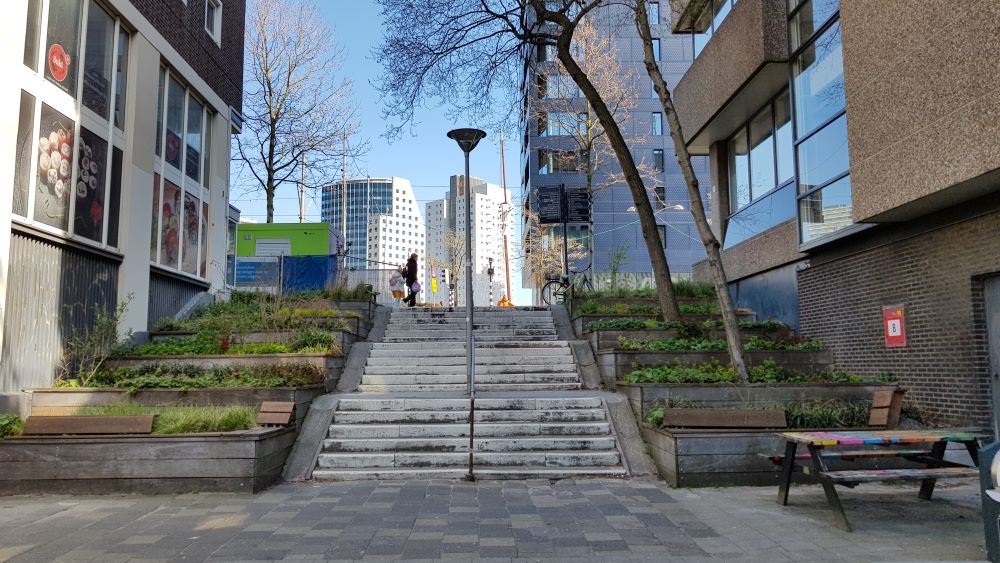During the first meeting of the Learning Constituency, the participating municipalities identified their approach and key issues.
Amersfoort
To combat the housing shortage, Amersfoort will add 1,000 annually until 2030, eighty percent of which will be within the city. Green is one of the tasks of development in the environmental vision, but how can you make it green in a city with a high population density? Amersfoort has a green policy, but at the moment it is mainly focused on biodiversity and climate adaptation. The municipality wants to know what the environmental program can mean in developing an integrated approach to greening the city.
Amsterdam
In 2020, the Amsterdam municipality has developed a green vision to unite all green values. With this, the municipality wants to develop a cohesive network at all levels, which contributes to the environment, climate adaptation, health and social well-being. In addition, the test card led to the main green policy structure. The municipality wants to go radically green. Is rigorous greening spatially feasible and is the environmental program an appropriate tool for this?
Dordrecht
Dordrecht, like many cities, has to deal with urban densification. The municipality has an ambition to bring green to the front door. Spearhead is a blue-green city with the goal of adapting to climate, biodiversity and a healthy living environment. The municipality has embedded this in the environmental vision. There is a teal program in the draft, pending approval from the new city council. Given the Green and Healthy Living Environment Programme, the combination of physical and social well-being is essential. Dordrecht focuses on two questions in the learning cycle: How do you build a blue-green environmental program yourself and how do you reserve space for greening in space in anticipation of an environmental plan?
Eindhoven
Eindhoven’s environmental vision places a strong emphasis on green spaces, climate and water. The municipality wants to achieve a green ring around the centre, as stipulated in the Eindhoven Center green scheme. Eindhoven hopes to protect this plan with the environmental programme. Condensation should contribute to greening: each house should add eight square meters of green space. The question now is whether the environmental program is appropriate for this.
Leadership
Leiden has been working on preparations for four years: the Environmental Vision 2.0 and the Environmental Impact Assessment have already been completed, and developments in the designated area have been identified. The municipality has developed an integrated map based on four frameworks: green and blue, mobility, soil and attractive business climate. The green and blue frame should allow the residents to access the greenery from the house within a certain distance. A good example is the Singelpark around the city centre. The municipality wants to realize something similar to the surrounding areas, so that more areas can be connected to this. In the learning circle, Leiden wants to focus on the concrete measures and actions needed to come up with a green-blue framework. The municipality also wants to know how the environmental program can help with this. In addition, the municipality is exploring what the administrative and political process for the environmental program would look like – with a view to operating more integrated and faster – if it is unclear who the competent authority is.
Rincom
The municipality of Rincom has an average of 66 square meters of green space per house, so it faces another problem, which is the new set of tools. Current plans are valid until 2027. In the Learning Circle, Rincom is exploring what exactly will change with environmental law and how an environmental program can improve the environment, especially now that monitoring and evaluation must be taken into account.
Tilburg
Tilburg has an environmental vision since 2015. The topics detailed here are for 80 percent Environmental law protection. The green policy included here consists of a points system for the inclusive nature and green building. It is currently difficult to legally guarantee this. In 2020, the municipality developed an urban nature map with ecological structures. This helps maintain a constant volume across the city. In the Learning Circle, Tilburg explores legal safeguards through the environmental program: Can the program be seen as a political norm? What are the advantages and disadvantages compared to other environmental law and planning tools?

“Total coffee specialist. Hardcore reader. Incurable music scholar. Web guru. Freelance troublemaker. Problem solver. Travel trailblazer.”







More Stories
GALA lacks a chapter on e-health
Weird beer can taste really good.
Planets contain much more water than previously thought